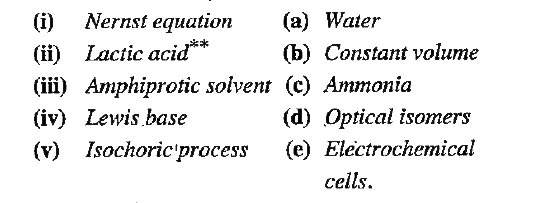The molecule in which an atom is associated with more than 8 electrons is known as hypervalent molecule and less than 8 electrons is known as hypovalent molecule. All hypervalent molecules must have bonding but the molecules having back bonding back boding need not to have always bondin.
Q.Which of the following molecule is not having bonding:
The correct Answer is:D
To determine which of the given molecules does not have p-pi d-pi bonding, we will analyze each option step by step.
Step 1: Analyze SO2
- Valence Electrons: Sulfur (S) has 6 valence electrons.
- Structure: In SO2, sulfur forms two sigma bonds with oxygen and has one lone pair.
- Bonding: The pi bonds involve:
- One p-pi p-pi overlap (between sulfur and oxygen).
- One p-pi d-pi overlap (between sulfur and oxygen).
- Conclusion: SO2 has p-pi d-pi bonding.
Step 2: Analyze P4O10
- Valence Electrons: Phosphorus (P) has 5 valence electrons and there are 10 oxygen atoms.
- Structure: Each phosphorus atom forms 5 bonds (4 sigma and 1 pi).
- Bonding: The pi bond involves:
- p-pi d-pi overlap (between phosphorus and oxygen).
- Conclusion: P4O10 has p-pi d-pi bonding.
Step 3: Analyze PF3
- Valence Electrons: Phosphorus has 5 valence electrons, and each fluorine has 7.
- Structure: In PF3, phosphorus forms three sigma bonds with fluorine.
- Bonding: The pi bond involves:
- p-pi d-pi overlap (between phosphorus and fluorine).
- Conclusion: PF3 has p-pi d-pi bonding.
Step 4: Analyze B3N3H6 (Inorganic Benzene)
- Valence Electrons: Boron (B) has 3 valence electrons and nitrogen (N) has 5.
- Structure: The structure alternates between boron and nitrogen atoms, forming a cyclic compound.
- Bonding: The pi bonds are formed by:
- p-pi p-pi overlap (between boron and nitrogen).
- Conclusion: B3N3H6 does not have p-pi d-pi bonding, as boron and nitrogen do not have d-orbitals.
Final Conclusion
The molecule that does not have p-pi d-pi bonding is B3N3H6.
---
- Valence Electrons: Sulfur (S) has 6 valence electrons.
- Structure: In SO2, sulfur forms two sigma bonds with oxygen and has one lone pair.
- Bonding: The pi bonds involve:
- One p-pi p-pi overlap (between sulfur and oxygen).
- One p-pi d-pi overlap (between sulfur and oxygen).
- Conclusion: SO2 has p-pi d-pi bonding.
- Valence Electrons: Phosphorus (P) has 5 valence electrons and there are 10 oxygen atoms.
- Structure: Each phosphorus atom forms 5 bonds (4 sigma and 1 pi).
- Bonding: The pi bond involves:
- p-pi d-pi overlap (between phosphorus and oxygen).
- Conclusion: P4O10 has p-pi d-pi bonding.
- Valence Electrons: Phosphorus has 5 valence electrons, and each fluorine has 7.
- Structure: In PF3, phosphorus forms three sigma bonds with fluorine.
- Bonding: The pi bond involves:
- p-pi d-pi overlap (between phosphorus and fluorine).
- Conclusion: PF3 has p-pi d-pi bonding.
- Valence Electrons: Boron (B) has 3 valence electrons and nitrogen (N) has 5.
- Structure: The structure alternates between boron and nitrogen atoms, forming a cyclic compound.
- Bonding: The pi bonds are formed by:
- p-pi p-pi overlap (between boron and nitrogen).
- Conclusion: B3N3H6 does not have p-pi d-pi bonding, as boron and nitrogen do not have d-orbitals.
The molecule that does not have p-pi d-pi bonding is B3N3H6.
Topper's Solved these Questions
- BOOK - VK JAISWAL ENGLISHCHAPTER - CHEMICAL BONDING (ADVANCED)EXERCISE - ONE OR MORE ANSWER IS/ARE CORRECT78videos
CHEMICAL BONDING (ADVANCED)
- BOOK - VK JAISWAL ENGLISHCHAPTER - CHEMICAL BONDING (ADVANCED)EXERCISE - MATCH THE COLUMN21videos
CHEMICAL BONDING (ADVANCED)
- BOOK - VK JAISWAL ENGLISHCHAPTER - CHEMICAL BONDING (ADVANCED)EXERCISE - Level 2150videos
CHEMICAL BONDING (ADVANCED)
- BOOK - VK JAISWAL ENGLISHCHAPTER - CHEMICAL BONDING (BASIC)EXERCISE - SUBJECTIVE PROBLEMS54videos
CHEMICAL BONDING (BASIC)
Similar Questions
The molecule in which an atom is associated with more than 8 electrons is known as hypervalent molecule and less than 8 electrons is known as hypovalent molecule. All hypervalent molecules must have pπ−dπ bonding but the molecules having back bonding back boding need not to have always pπ−dπ bondin.
Q. Which of the following is having complete octet:View SolutionThe molecule in which an atom is associated with more than 8 electrons is known as hypervalent molecule and less than 8 electrons is known as hypovalent molecule. All hypervalent molecules must have pπ−dπ bonding but the molecules having back bonding back boding need not to have always pπ−dπ bondin.
Q.Which of the molecule is not hypovalent but complete its octet:View Solution
Knowledge Check
- Question 1 - Select One
Match the following:
 AA and DBB and CCC and EDB and E
AA and DBB and CCC and EDB and E
Which of the following molecules(s) is /are having pπ−dπ back bonding
View SolutionWhich of the following molecules does not have co-ordinate bond?
View SolutionWhich of the following molecule has weakest (pπ−dπ) back bonding?
View SolutionWhich of the following molecule have both Pπ−Pπ and Pπ−dπ bonding ?
View SolutionWhich of the following molecule is planar due to back bonding
View SolutionWhich of the following the molecule (s) has/have back bonding ?
View SolutionWhich of the following molecules involves the formation of dπ−pπ bonding ?
View Solution

